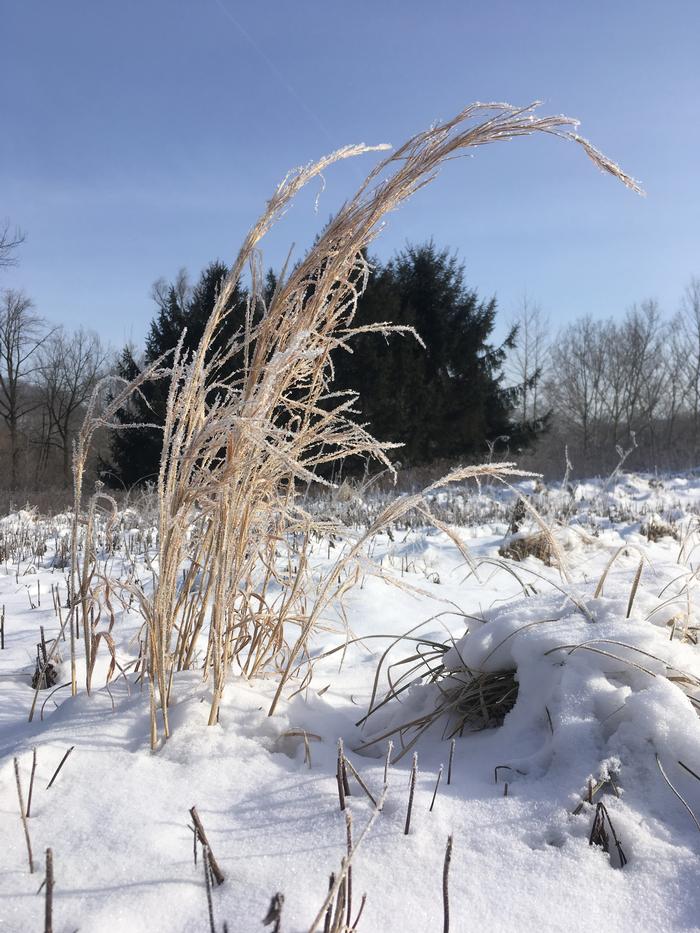« Previous Plant | Next Plant »
Andropogon virginicus
Broomsedge
Common in the Northeast, Andropogon virginicus, broomsedge, is a native clumping warm season grass that grows best in relatively infertile soil conditions which makes it a great choice for the dry compacted banks of stormwater basins. Growing about 4' tall in full sun, the coppery glow of Andropogon virginicus fall foliage combined with the inflorescence of the flower heads looks spectacular from afar, as well as with a fresh coating of snow.
- » Narrow clump forming warm season grass
- » Thrives in poor soils
- » Host plant of the Zabulon Skipper butterfly
- » Wildlife habitat
Additional Information
| Height | 36-60 Inches |
| Hardiness Zone | 3-9 |
| Color |
Reddish Brown |

The ever adaptable Andropogon virginicus is sweeping throughout fallow fields. They show off their fall colors this time of year as they shift from green to a reddish-purple. Glimmering silver in the sun, their seed heads begin to puff out, releasing into the breeze. They are aggressive colonizers, which is perfect for their naturalized habitats in old fallow fields and meadows. They’re tolerant of high salt, drought, and wet or dry soils, making them excellent for roadside habitats. As a C4 grass, Andropogon virginicus prefer full sun and can handle higher temperatures. They have a full spectrum of seasonal interest - providing a green background spring through summer, changing to a red-purple in the fall, and lastly, a delicate pale orange through winter. Andropogon virginicus is an essential provider of cover and nesting material for birds, like the bobwhite quail. Also, its seed provides winter food for song birds. Andropogon virginicus is also a host plant to the small but beautiful Zabulon Skipper butterfly.